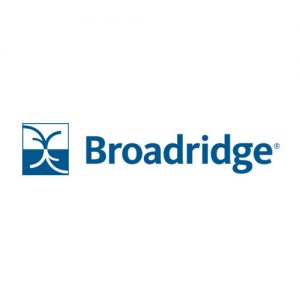“A situation that is both complex and duplicative.”
When Scott O’Malia, chairman of ISDA (the International Swaps and Derivatives Association) made that comment in March this year he was describing the complexities that arise in trading Securities Lending, Repo and Derivatives under different legal documentation. Though it’s not just differences in legal documentation that create complexity for financial services firms who are trading all three types of products, often on the same trading desk or within the same investment fund. There are differences in systems used and business processes, even where they converge in areas such as collateral management.
ISDA has been making the point about the overlaps, differences and potential for harmonisation for some time. In October 2020 they published a very thoroughly researched and logical whitepaper on this topic called “Collaboration and Standardization Opportunities in Derivatives and SFT Markets”. Their push for harmonisation is not just empty words. Since 2016 there has been an initiative in progress to standardise data models and data processing through the introduction of a Common Domain Model (CDM). The CDM initiative started with ISDA but has since spread to Securities Lending, with a securities lending CDM championed by the International Securities Lending Association (ISLA) and a REPO CDM programme, sponsored by the International Capital Markets Association (ICMA). All three CDMs are being developed using the same tools with the assistance of the same consultancy; last year ISDA, ISLA and ICMA agreed to merge the three CDMs into a single model that covered all three asset classes.
ISDA has also taken a step towards legal harmonisation with the publication in February 2022 of documentation to align derivatives and securities finance transaction. As O’Malia noted, this will “give firms the option to trade derivatives and SFTs under a single ISDA Master Agreement.” So, what does this all mean and how can the industry prepare?
A history of convergence
The overlap between securities finance, repo and OTC derivatives is decades old and has arguably been growing closer. The yield enhancement business started out as a securities lending activity, then grew to include equity swaps, options, futures and warrants. Rates desks use a combination of repo and interest rate derivatives to create trading strategies. Repo and securities lending are intertwined in multiple ways: repo can be used to borrow securities and securities lending as a funding mechanism. Repo is also commonly being used to re-invest cash collateral received from lending securities.
The ability to carry out economically equivalent activities using combinations of stock loans, repos, and derivatives to improve liquidity, capital charges, tax treatment and P&L is a primary driver of convergence. A repo can be structured as economically equivalent to a bond sale combined with a total return swap, and repo and stock lending trades can have embedded optionality that could otherwise be modelled as specific options transactions. Stocks can be shorted using put options, short equity swaps or stock loans, combined with a sale and ultimately a re-purchase. Even more flexibility can be achieved using the variety of products combined under a prime brokerage agreement. There are obvious upsides to a uniform approach across the three markets. These include potential for increasing operational efficiencies from a unified approach and reduction in the time negotiating and maintaining separate legal documentation. A single combined agreement that is standardized across the markets and the regions could drastically streamline multiple business processes, in front office, operations, risk and legal departments.
Long before the initiatives originating from ISDA, there has been long running trend towards convergence in collateral management. Repo and stock lending are forms of collateralised trading, i.e., the exchange and valuation of collateral is integral to both trading and management of trades through the trade lifecycle. Some forms of derivatives like Contracts for Difference also have similar characteristics, but most involve collateral management as a separate parallel process. For over a decade many firms have been working to integrate collateral management teams for the three areas (and sometimes FX and Exchange Traded Derivatives as well) into single teams covering all products. In parallel, both system vendors and internal IT departments have been working to build systems that support these integrated teams. Differences in the basic processing of transactions and legal agreements have slowed down convergence even in collateral management. The different master agreements by default do not allow cross netting of exposures and can have inconsistent language relating to key business events. The same team may use the same system carrying out collateral management processes but they still carry out the processes in different ways.
Even with the efforts to merge data, processing and legal models, it is still clear that for all the overlaps and good intentions the three sectors of capital markets often think and talk about similar things in very different ways. Taking the approach of forcing securities lending or repo into a derivatives model would be a very difficult path because there are still fundamental differences such as the need to deliver securities as opposed to having purely cash settlement and the degree of integration of collateral related events (e.g., cash marks and re-prices) into the core trade lifecycle.
Getting over the limiting factors
However, in terms of sheer market size the gravitational force of the derivatives market is huge. While open notional values in the securities lending market measure in around $2.7 trillion globally and repo in the low tens of trillions, the value for the derivatives market is $600 trillion, according to the latest Bank for International Settlements statistics. As a consequence ISDA is considerably larger and better funded than most other equivalent trade associations. Derivatives trading desks also typically have often reached a higher level of sophistication in calculating and managing risk and P&L. In many ways securities lending and repo could be made more derivative like, but only if the target model fully understands the degree of overlap with securities trading and settlements.
Ultimately there is nothing to force the ultimate merging of the three asset classes, apart from the slow, steady pressure of the economics of running a capital markets business. The pressure however is real, and firms would be wise to keep progressing in obvious areas for convergence such as management of inventory, integration with tri-party agents, cross-training of staff and consolidation of infrastructure onto cross-asset systems.
About the Author
 Martin Walker is the Head of Product Management for Broadridge’s Securities Finance and Collateral Management division. Former roles include Global Head of Securities Finance and Treasury IT at Dresdner Kleinwort and Global Head of Prime Brokerage Technology at RBS Markets. He has also worked as a consultant and researcher in capital markets with several papers published. He contributed to the new book, Evidence-Based Management – How to Use Evidence to Make Better Organizational Decisions, and his first book on Capital Markets infrastructure will be published later in the year. He has an MSc in Computing Science from Imperial College, London and a BSc in Economics from the London School of Economics. He is also a fellow of the Centre for Evidence-based Management.
Martin Walker is the Head of Product Management for Broadridge’s Securities Finance and Collateral Management division. Former roles include Global Head of Securities Finance and Treasury IT at Dresdner Kleinwort and Global Head of Prime Brokerage Technology at RBS Markets. He has also worked as a consultant and researcher in capital markets with several papers published. He contributed to the new book, Evidence-Based Management – How to Use Evidence to Make Better Organizational Decisions, and his first book on Capital Markets infrastructure will be published later in the year. He has an MSc in Computing Science from Imperial College, London and a BSc in Economics from the London School of Economics. He is also a fellow of the Centre for Evidence-based Management.


